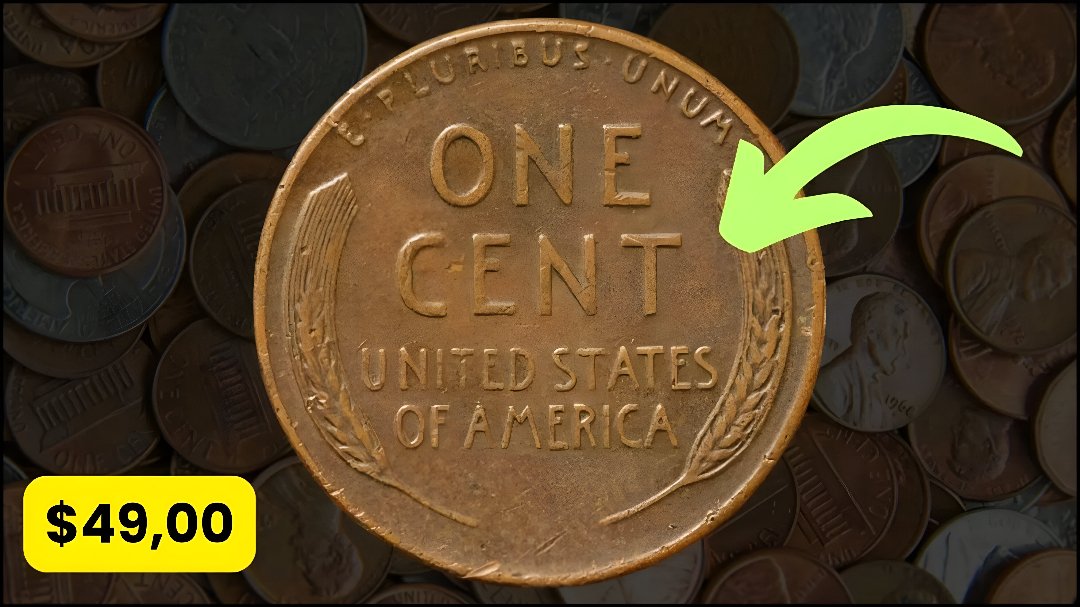Lincoln Wheat Penny : In a world increasingly dominated by digital transactions, it may surprise you to learn that a humble copper coin—first minted over a century ago—could still be hiding in your change jar, purse, or pocket. The Lincoln Wheat Penny, particularly rare editions, have become the focus of coin collectors and treasure hunters alike. One such coin has recently drawn renewed attention: a Lincoln Wheat Penny valued at an astonishing $49,000.
How To Spot The Rare 1976 Bicentennial Quarter Worth UP To $3 Million
What Makes the Lincoln Wheat Penny Special?
The Lincoln Wheat Penny, officially known as the Lincoln cent, was introduced in 1909 to commemorate the 100th birthday of President Abraham Lincoln. Designed by Victor D. Brenner, it was the first U.S. coin to feature a real person. The coin’s reverse side displayed two wheat stalks, hence the nickname “Wheat Penny.”
Minted until 1958, Wheat Pennies are no longer in regular production—but many still circulate or rest in private collections. Most are worth only a few cents to a few dollars, but certain rare variants are worth significantly more.
The $49,000 Penny: What Makes It So Valuable?
The Wheat Penny that can fetch $49,000 or more is not your average coin. These valuable versions typically share one or more of the following features:
- Minting Errors: Coins with double dies, off-center strikes, or misprinted dates are rare and highly sought after. The 1955 Double Die Lincoln Cent is one famous example.
- Limited Mintage: Coins produced in small numbers, such as the 1909-S VDB (minted in San Francisco with the designer’s initials), can command extremely high prices.
- High-Grade Condition: A penny in near-perfect or uncirculated condition can drastically increase its value, especially if it’s already a rare year or error.
- Unique Variants: Certain coins struck during metal shortages in wartime (like the 1943 copper cent, accidentally minted when leftover copper planchets were used instead of steel) are exceptionally rare.
It’s important to note that a 1943 copper Wheat Penny, one of the most famous error coins, has fetched between $40,000 and over $100,000 at auctions depending on condition and certification.
Could One Still Be in Circulation?
Surprisingly, yes. While the odds are low, some rare pennies have slipped through the cracks—literally and figuratively. Old coin collections get cashed in, inherited, or donated, and once in a while, a valuable coin ends up back in the general money supply.
Stories abound of people discovering Wheat Pennies at gas stations, in tip jars, or among loose change. Though it’s unlikely you’ll stumble upon a five-figure penny in your next transaction, the possibility has kept coin hunters vigilant.
How to Check Your Pennies
If you’re curious about your own stash of pennies, here are a few tips:
- Check the Date: Look for years between 1909–1958.
- Look for Mint Marks: Especially “S” (San Francisco) or “D” (Denver) under the date.
- Spot Errors: Double numbers or letters, off-center prints, or unusual coloration may indicate a rare minting error.
- Use a Magnifier: Fine details can make a big difference.
- Consult an Expert: A coin dealer or grading service like PCGS or NGC can verify authenticity and condition.
Final Thoughts
The idea that a simple penny could be worth $49,000 is both thrilling and humbling. It reminds us that even in an age of digital currencies and billion-dollar NFTs, sometimes the most extraordinary value is hiding in the most ordinary places. So next time you’re handed a handful of change, take a closer look—history and hidden treasure may be right at your fingertips.
Pro tip: Keep an eye out for the 1943 copper penny, 1955 double die, and 1909-S VDB. One of them might just turn your pocket change into a payday.
FAQs: The Lincoln Wheat Penny Valued at $49,000 — Still in Circulation?
Q1: What is the Lincoln Wheat Penny?
It’s a U.S. one-cent coin minted from 1909 to 1958, featuring Abraham Lincoln on the front and two wheat ears on the back.
Q2: Why is one worth $49,000?
Certain rare versions—like the 1943 copper penny, 1955 double die, or 1909-S VDB—are highly valuable due to minting errors, rarity, and demand from collectors.
Q3: Is the $49,000 Wheat Penny still in circulation?
Yes, possibly. Though rare, some valuable Wheat Pennies still slip into circulation through old collections or loose change.
Q4: How can I tell if I have a valuable one?
Look for:
- Dates like 1909, 1943, 1955
- Mint marks like “S” (San Francisco) or “D” (Denver)
- Errors like doubled letters or wrong metal
- Good condition (uncirculated or minimal wear)
